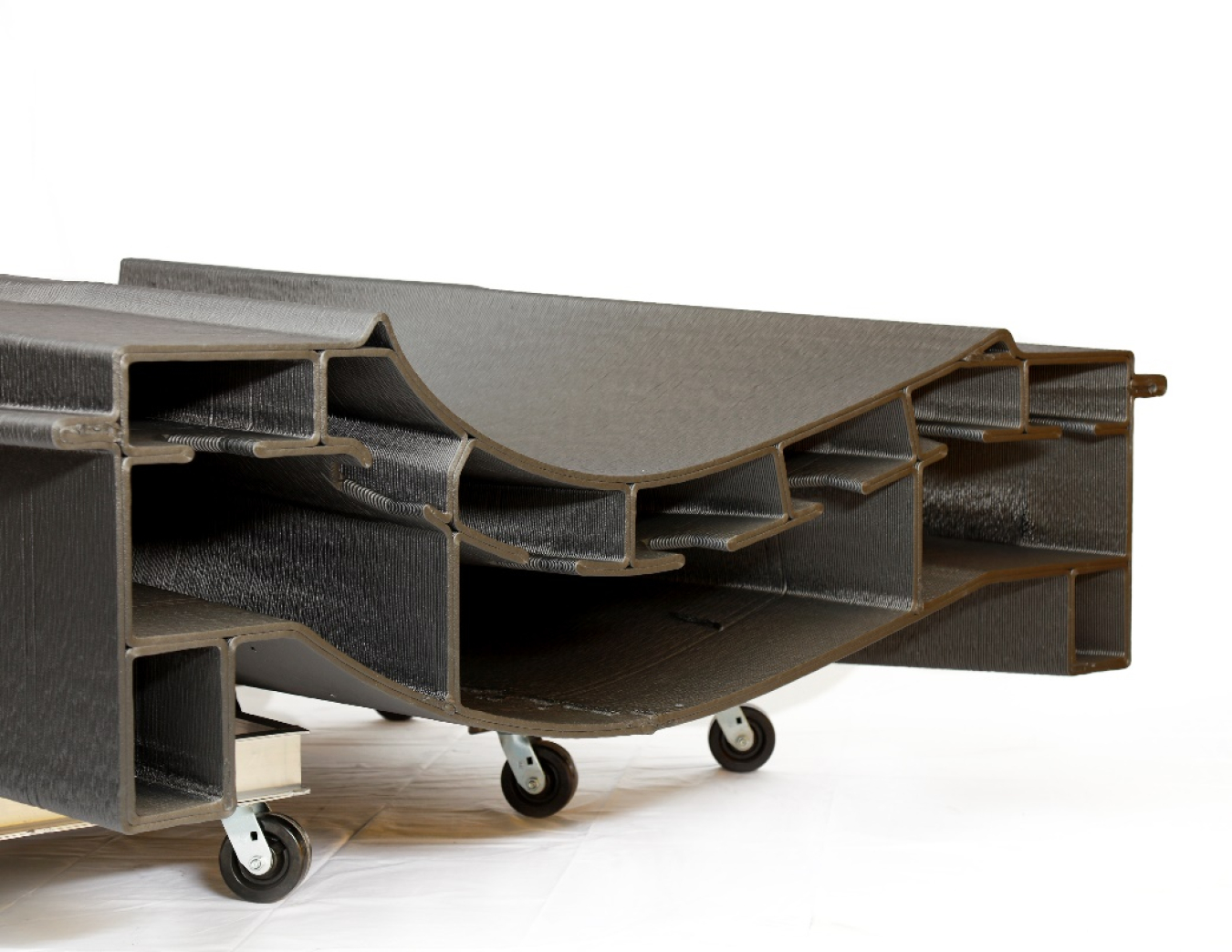Additive Manufacturing of Wind Blade Molds Projects to Save Time and Reduce Costs
Wind Energy Technologies Office
May 17, 2017
A view of a blade mold section showing the unique ducting that allows for a more efficient curing process. Photo courtesy of Oak Ridge National Laboratory
A partnership between the U.S. Department of Energy's (DOE's) Oak Ridge National Laboratory (ORNL), Sandia National Laboratories, and private company TPI Composites recently demonstrated the significant time- and cost-saving potential of integrating additive manufacturing techniques, also known as 3-D printing, into wind turbine tooling.
Traditionally, manufacturing a wind blade mold involves creating a physical model—or plug—of the blade, coating the plug with fiberglass to create a mold, running miles of wire through the mold to heat it and cure the resins, and making final adjustments to ensure the mold is within specification. A blade is one of the most expensive and time-consuming wind turbine components to manufacture, and that cost is rising as demand for larger blade sizes grows.
Additive manufacturing eliminates the need for the plug, and building ducts into the mold’s design allows manufacturers to cure the mold’s fiberglass finish with hot air, eliminating the need for wiring.
“The process reduces the time to manufacture the molds by reducing complexity. We demonstrated that the process could be accomplished in weeks rather than months with lower projected costs,” says Lonnie Love, corporate fellow and leader of the Manufacturing Systems Research group at ORNL.
Researchers printed the mold at DOE’s Manufacturing Demonstration Facility at ORNL using Cincinnati Incorporated’s Big-Area Additive Manufacturing platform. The 13-meter blade mold was printed in eight sections of about 2 meters each.
ORNL used acrylonitrile butadiene styrene (ABS) polymer reinforced with 20% carbon fiber by volume for the first 3-D-printed blade mold. The ABS material, which costs around $4–$5 per pound, is the “workhorse” for ORNL’s additive manufacturing research. Love also notes that integrating other materials such as glass fiber could cut those costs in half. The lab has also been researching the use of bio-based materials in additive manufacturing, such as bamboo and other wood composites.

